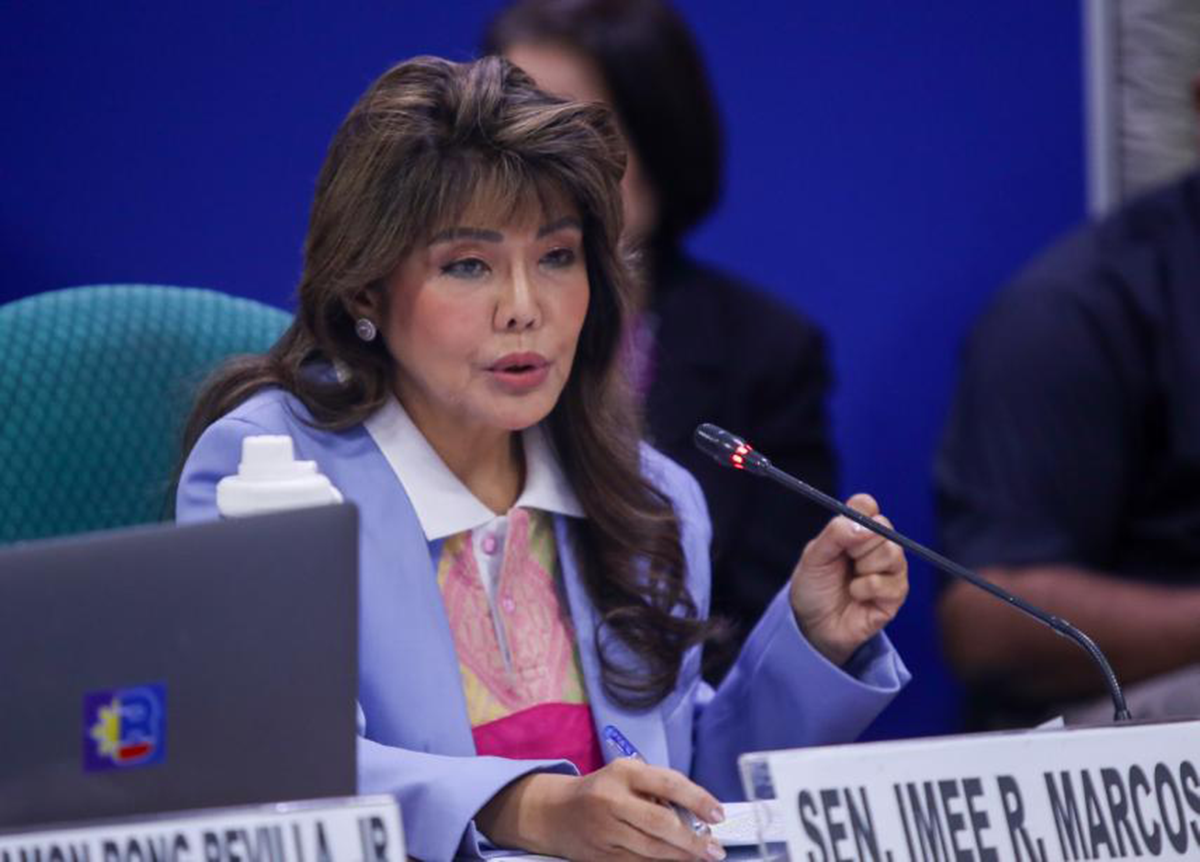
MORE QUESTIONS FROM MARCOS: Sen. Imee Marcos, during a public hearing of the Committee on Public Works on August 1, 2024, raises questions on the perennial flooding in the country. (Senate Public Relations and Information Bureau).
MANILA, Philippines — Senators on Thursday grilled Department of Public Works and Highways (DPWH) chief Manuel Bonoan over the lack of an integrated national flood control master plan despite perennial flooding in the country.
During the Senate committee on public works’ hearing, Bonoan said “several master plans” exist in 18 major river basins, which are in various preparation stages.
“I have taken a look in all these river basins and most of them, the master plans are still currently being updated at this point in time taking into account the climate change phenomenon and other factors that have to be incorporated in the master plan,” he added.
This did not sit well with Sen. Imee Marcos.
“So there’s [an] admission on the part of the DPWH that, in fact, a national flood control master plan still does not exist? Is that right? Because these are all separate, these are 18. These are not integrated. This is not even aligned with the Metropolitan Manila Development Authority, even our local government units have their own. Is that what’s happening?” she said a mixed of Filipino and English.
“But you have also admitted on your part that [these] are in various stages of preparation and that in many cases they are not integrated and that therefore, did they focus on flood-prone areas for social mitigation?”
“Also for the environment, the interventions, have they already been provided or are we still in the process of study?As your submission in the NEP (National Expenditure Program) would indicate, most are feasibility studies only. Which of these are complete and integrated?” she added.
Bonoan said the master plans are being updated.
READ: Villanueva to Marcos: Tackle flooding as seriously as Pogos
Marcos pointed out that some of the master plans were started during the 1970s.
“We know that as early as 1972, there was Metro Manila Flood Control and we also know that there is an Environmental Code, there is a Building Code, there is a Clean Water Act. There is something even the Supreme Court’s mandamus that says ‘aligned all that’ but we didn’t get anything but the dolomite beach, didn’t we?” she said.
“So I ask, where are the billions of dollars being allocated if there is no master plan? How do you choose the projects? Are there guidelines or parameters? Each time that you submit these billions and billions of requests, to what do you allocate if there is no integrated master plan for the entire country?” she added.
At this point, Sen. Joel Villanueva interjected. He said it is very telling that an integrated flood control master plan is not existing up to now.
Marcos branded the plans as “pirapiraso” (in pieces), adding that this is the reason why flood waters usually end up in Bulacan province.
Villanueva agreed with Marcos.
“It’s very important. Because even if you use the other one, for example what is mentioned here, the speed of the water going down in Metro Manila, which is good for those who are living in the metro area, but it appears that the water ends up in our area (Bulacan),” he said.
“I see where Sen. Imee is coming from. If it is not integrated, if you do it in one place, the other side, the other province, the other town, the other barangay will be flooded,” he added.
READ: Joel Villanueva: Past reclamation helped worsen flooding in Bulacan